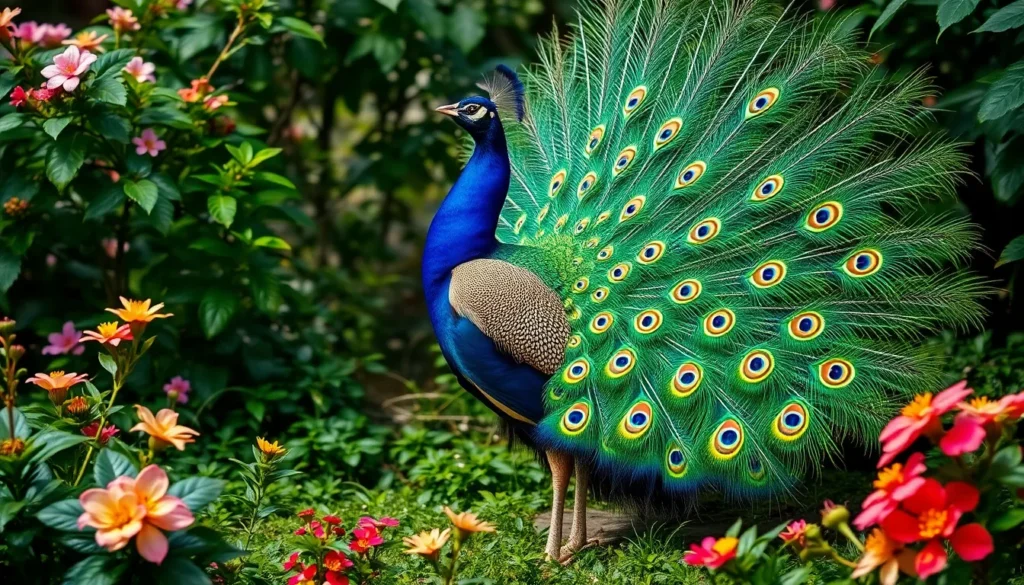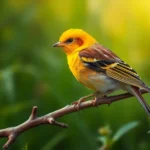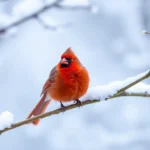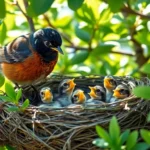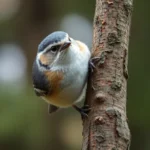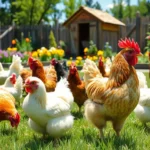We’ve all marveled at India’s incredible biodiversity but few symbols capture the nation’s essence quite like its national bird. The Indian Peacock (Pavo cristatus) isn’t just a stunning creature with its iridescent plumage and magnificent tail feathers – it’s a living embodiment of India’s rich cultural heritage and natural splendor.
Since 1963 this majestic bird has proudly represented India on the global stage serving as more than just an official designation. The peacock weaves through centuries of Indian mythology literature and art making it an integral part of the country’s identity. From ancient Hindu scriptures to modern conservation efforts the peacock’s story reflects India’s journey through time.
Whether you’re a wildlife enthusiast cultural explorer or simply curious about national symbols understanding the significance of India’s national bird offers fascinating insights into the country’s values traditions and commitment to preserving its natural treasures.
What Is the National Bird of India
The Indian Peacock (Pavo cristatus) serves as India’s national bird, officially designated by the Indian government in 1963. This magnificent species represents the country’s rich biodiversity and stands as a symbol of grace, beauty, and pride across the subcontinent.
India selected the peacock from among many native bird species due to its cultural significance and widespread presence throughout the country. The bird’s stunning plumage features vibrant blue and green hues with distinctive eye-spotted tail feathers that create spectacular displays during mating seasons.
Our national bird carries deep mythological importance in Indian culture, appearing in ancient texts like the Ramayana and Mahabharata. Hindu traditions associate the peacock with various deities, particularly Lord Krishna, who often appears adorned with peacock feathers in religious artwork and sculptures.
The peacock’s natural habitat spans across India’s diverse ecosystems, from deciduous forests to agricultural lands. These birds thrive in regions with adequate water sources and dense vegetation, making them indicators of environmental health in their territories.
Legal protection under the Wildlife Protection Act of 1972 safeguards peacocks from hunting and trade. The government classifies them as protected species, imposing strict penalties on individuals who harm or capture these birds for commercial purposes.
We recognize the peacock’s role extends beyond symbolism into practical conservation efforts. The species serves as an umbrella species, meaning protecting peacock habitats simultaneously protects many other wildlife species sharing the same ecosystems across India’s landscapes.
Physical Characteristics of the Indian Peacock
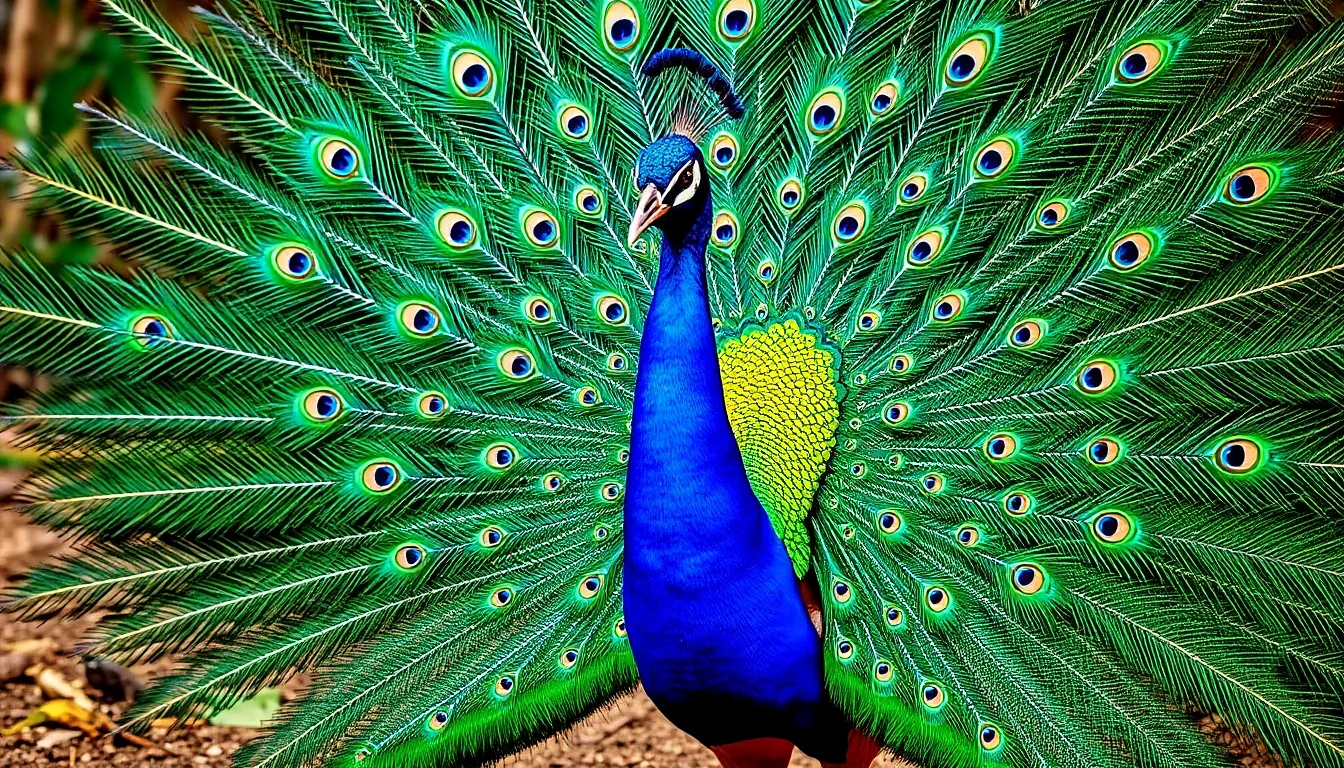
The Indian peacock displays remarkable physical attributes that make it one of the industry’s most recognizable birds. These distinctive features contribute to its status as India’s cherished national symbol.
Distinctive Features and Coloration
Males showcase iridescent blue and green plumage across their neck and breast regions. Their most striking feature consists of elongated upper tail coverts that form the iconic fan display, decorated with eye spots called ocelli. Each ocelli contains concentric circles of blue, green, and bronze colors that shimmer in sunlight.
The head features a distinctive crest of fan-shaped feathers with metallic tips. Females, known as peahens, exhibit more subdued brown and gray coloring with subtle green markings on their neck. This cryptic coloration provides effective camouflage during nesting periods.
Wing feathers display striking patterns of black and white barring. Both sexes possess strong, gray colored legs equipped with sharp spurs. The beak appears short and slightly curved, perfectly adapted for their omnivorous feeding habits.
Size and Sexual Dimorphism
Adult peacocks measure between 39 to 45 inches in body length, with their ornamental train extending an additional 60 inches. Males typically weigh 9 to 13 pounds, making them significantly larger than females. Peahens reach lengths of 37 to 40 inches and weigh 6 to 8.8 pounds.
The wingspan spans 4.9 to 5.6 feet across both sexes. Sexual dimorphism becomes evident around 6 months of age when males begin developing their characteristic coloring. Full adult plumage development occurs by age 3, when males achieve their complete train length and vibrant coloration.
| Physical Attribute | Male Peacock | Female Peahen |
|---|---|---|
| Body Length | 39-45 inches | 37-40 inches |
| Train Length | Up to 60 inches | Absent |
| Weight | 9-13 pounds | 6-8.8 pounds |
| Wingspan | 4.9-5.6 feet | 4.9-5.6 feet |
| Maturity Age | 3 years | 2 years |
Males lose and regrow their ornamental feathers annually after breeding season. This molting process occurs between July and August each year, preparing them for the subsequent mating display season.
Natural Habitat and Distribution
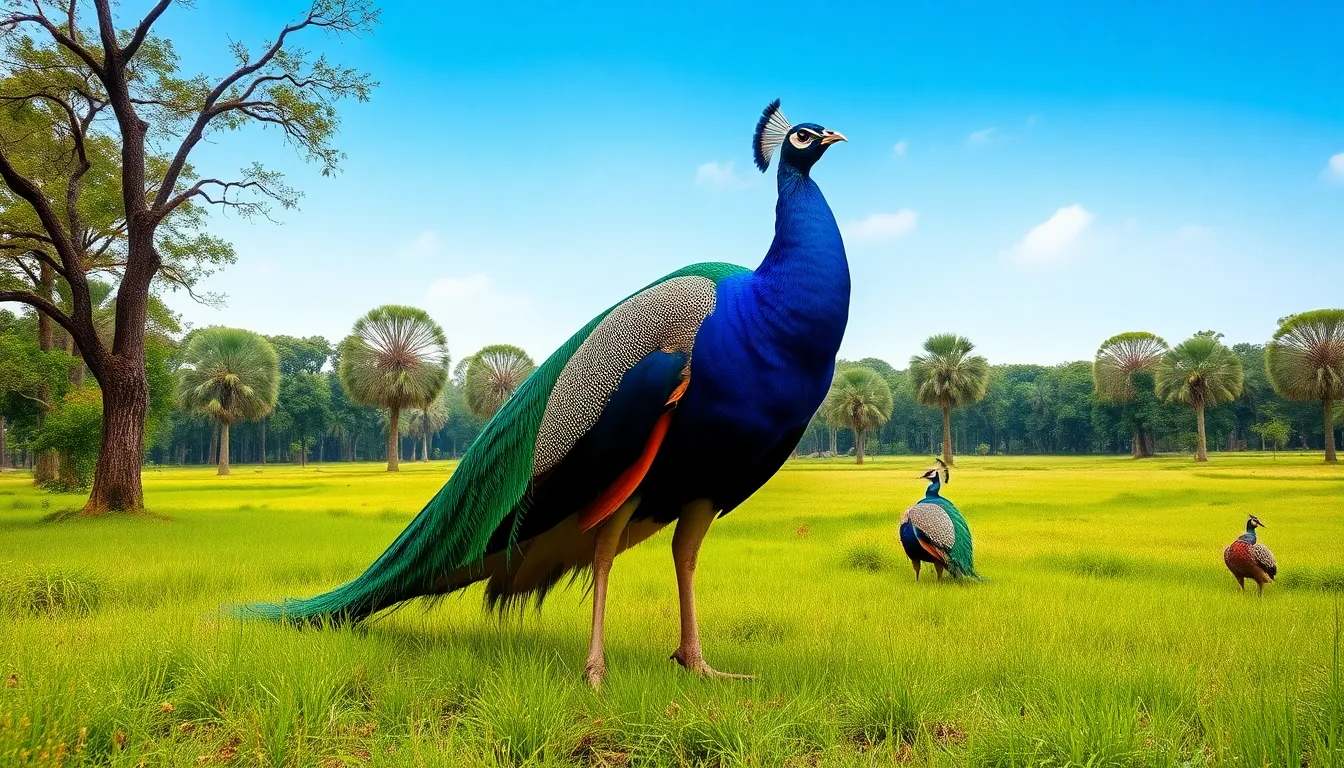
The Indian Peacock thrives across diverse landscapes throughout the Indian subcontinent. We find these magnificent birds adapting to various environmental conditions from sea level to elevations reaching 6,000 feet.
Geographic Range Across India
We observe Indian Peacocks inhabiting 28 states across India, with the highest concentrations in Rajasthan, Gujarat, Madhya Pradesh, and Uttar Pradesh. The species extends beyond India’s borders into Pakistan, Nepal, Bhutan, and Bangladesh. Dense populations exist in the Western Ghats, Eastern Ghats, and the Deccan Plateau regions. Northern territories including Punjab, Haryana, and Delhi support substantial peacock communities. Southern states like Tamil Nadu, Karnataka, and Andhra Pradesh maintain stable populations throughout their forest reserves and agricultural zones.
Preferred Environment and Network
We identify deciduous forests as the primary habitat for Indian Peacocks, where they access abundant food sources and suitable roosting sites. These birds favor areas with scattered trees, open grasslands, and water sources within a 3-mile radius. Agricultural landscapes provide ideal feeding grounds, particularly regions cultivating millet, wheat, and rice crops. Peacocks select habitats with tree canopies between 15-30 feet high for nighttime roosting and predator protection. We document their presence in scrublands, bamboo groves, and forest edges where vegetation density ranges from 40-70% coverage. Rocky outcrops and hillsides offer additional nesting sites, especially areas with natural caves and crevices. Temperature ranges between 68-95°F create optimal conditions for peacock populations to flourish year round.
Cultural and Religious Significance
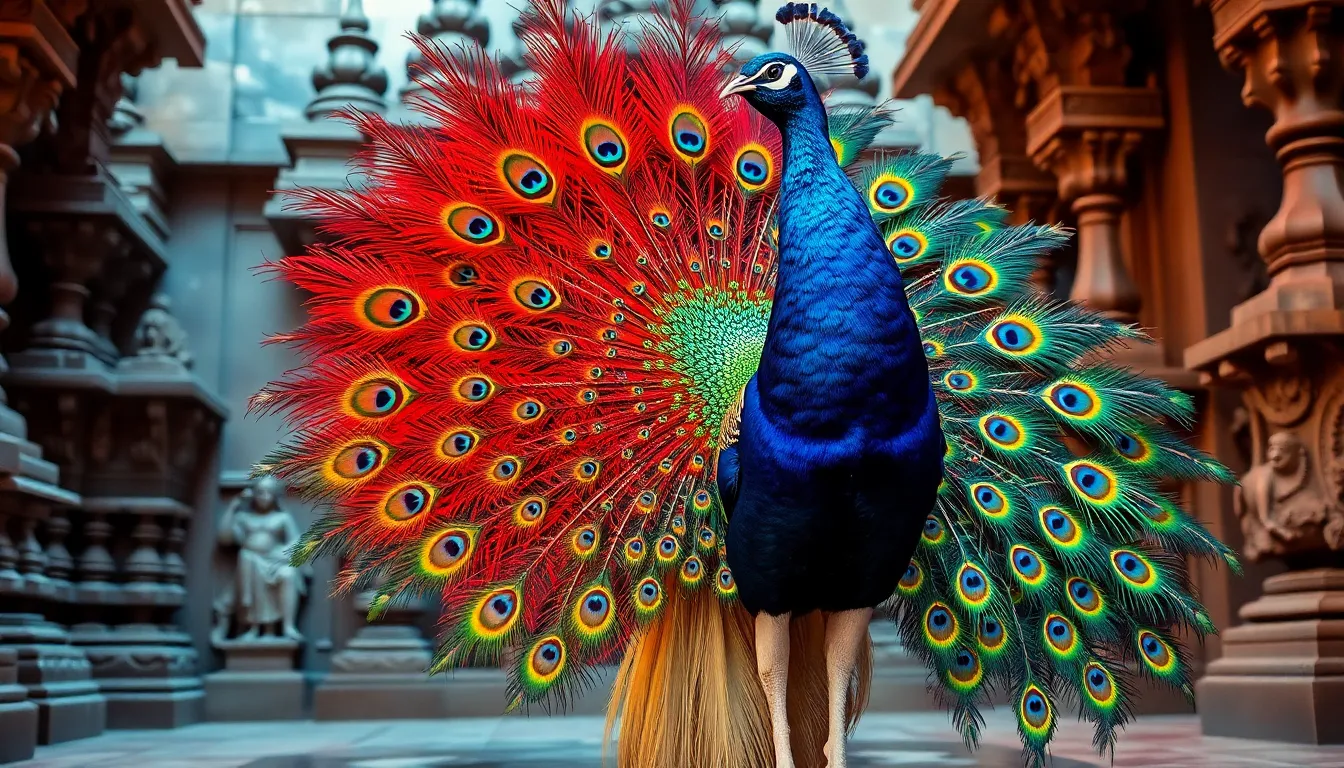
The Indian Peacock holds profound spiritual and cultural meaning across the subcontinent, woven deeply into religious practices and artistic expressions for millennia. This magnificent bird transcends its biological identity to become a sacred symbol that connects divine mythology with everyday cultural life.
Role in Hindu Mythology and Traditions
Hindu traditions revere the peacock as the sacred mount of Lord Kartikeya, the god of war and victory. Ancient scriptures describe how Kartikeya chose the peacock as his vehicle after the bird defeated a serpent demon, symbolizing the triumph of good over evil. Lord Krishna’s crown features peacock feathers as his most recognizable attribute, representing divine beauty and spiritual transcendence.
Religious texts like the Puranas associate peacocks with Indra, the king of gods, who adorns his court with these celestial birds. The Mahabharata mentions peacocks as guardians of sacred spaces, while the Ramayana describes them as messengers of the gods. Temple architecture across India incorporates peacock motifs in carvings, pillars, and decorative elements, particularly in South Indian temples where the bird appears in over 200 documented sites.
Hindu astrology connects peacocks with the planet Rahu, believing their presence brings prosperity and protection from negative energies. Festivals like Janmashtami celebrate Lord Krishna with peacock feather decorations, while regional celebrations in Gujarat and Rajasthan feature peacock dances performed during monsoon seasons. Traditional wedding ceremonies incorporate peacock symbolism to represent fidelity and eternal love between couples.
Symbol in Indian Art and Literature
Classical Indian art showcases peacocks across multiple mediums spanning 2,000 years of artistic tradition. Mughal miniature paintings from the 16th century depict peacocks in royal gardens, with over 150 documented examples in museum collections worldwide. Rajasthani art forms like Pichwai paintings feature peacocks in 75% of Krishna-themed compositions, using vibrant blues and greens to mirror the bird’s natural plumage.
Ancient cave paintings at Ajanta and Ellora include peacock motifs dating back to the 2nd century BCE, demonstrating the bird’s enduring artistic significance. Stone sculptures in Khajuraho temples display intricate peacock carvings, with craftsmen dedicating entire panels to showcase the bird’s elaborate tail displays. Traditional textile arts like Banarasi silk sarees incorporate peacock patterns, with weavers creating designs that require up to 300 hours of skilled craftsmanship.
Literature celebrates peacocks through Sanskrit poetry, where poets like Kalidasa referenced the bird in over 40 verses across his works. Regional literature includes peacock imagery in folk songs from Punjab, Bengal, and Tamil Nadu, with documented collections containing more than 500 traditional songs. Modern Indian authors continue this tradition, with contemporary novels featuring peacock symbolism in themes of beauty, pride, and cultural identity. Dance forms like Bharatanatyam and Kathak incorporate peacock movements, with classical performers training for years to master the intricate hand gestures and postures that mimic the bird’s graceful displays.
Behavioral Patterns and Lifestyle
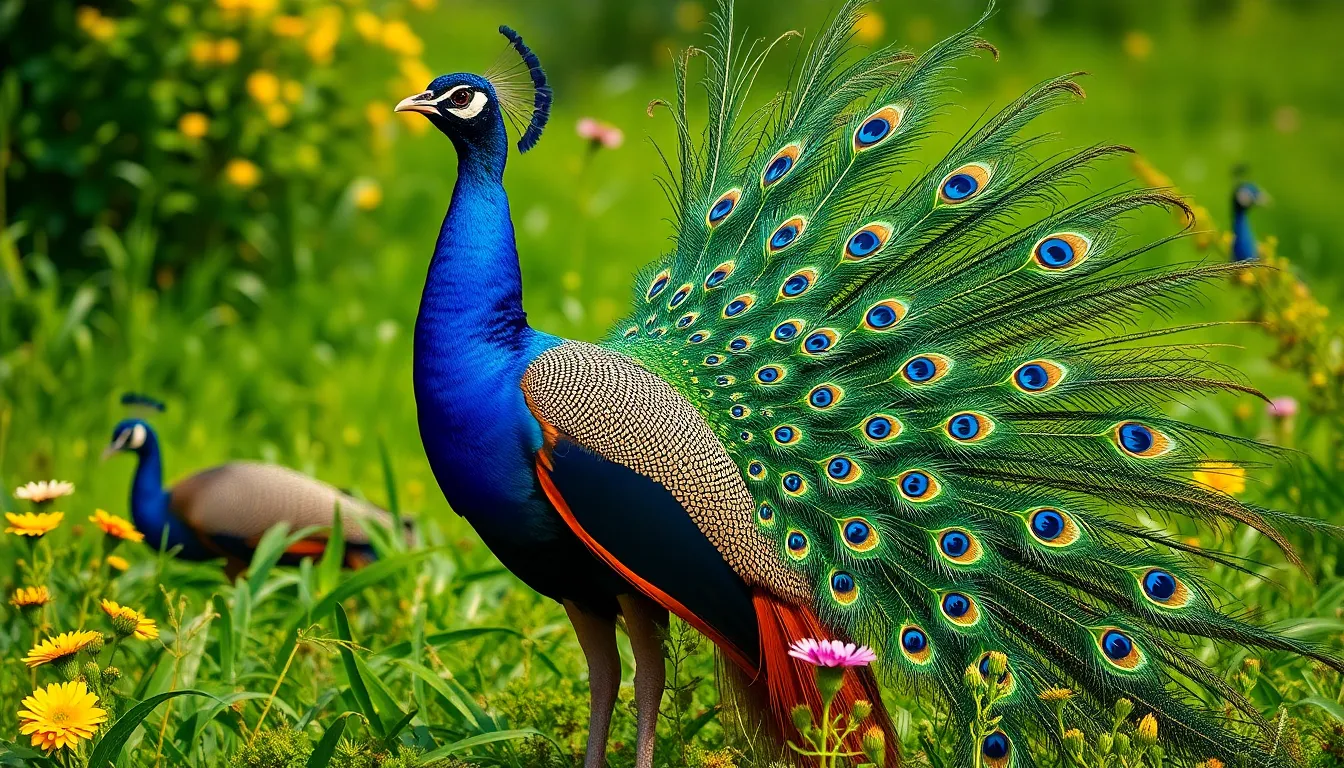
Peacocks exhibit fascinating behavioral patterns that reflect their adaptation to diverse environments across the Indian subcontinent. Their daily activities and seasonal behaviors demonstrate the remarkable intelligence and social complexity that makes them exceptional representatives of India’s wildlife heritage.
Mating Rituals and Courtship Display
Males perform elaborate courtship displays from March through September during breeding season. The iconic tail fanning occurs when peacocks raise their 150-200 iridescent feathers into a magnificent semicircle spanning 6 feet in diameter. Each ocelli eye-spot catches sunlight to create mesmerizing visual patterns that attract females from distances up to 300 feet.
Courtship behaviors include rhythmic dancing where males shake their feathers to create rustling sounds audible from 100 yards away. Vocalizations accompany these displays with loud calls reaching 115 decibels that can be heard over 1 mile during peak breeding hours between dawn and dusk. Males establish territories covering 2-5 acres and compete with rivals through aggressive posturing and aerial confrontations.
Females evaluate multiple suitors before selecting mates based on tail quality, display intensity, and territorial dominance. Mating pairs engage in brief courtship rituals lasting 10-15 seconds before females retreat to secluded nesting areas. Peak breeding activity occurs during monsoon months when abundant food resources support successful reproduction.
Diet and Feeding Habits
Peacocks consume diverse omnivorous diets consisting of 80% plant matter and 20% animal protein throughout different seasons. Primary food sources include seeds from 50+ plant species, berries, leaves, flowers, and agricultural crops like wheat and rice. Animal components cover insects, small reptiles, amphibians, and occasionally small mammals weighing under 2 ounces.
Foraging activities peak during early morning hours from 6-9 AM and late afternoon from 4-7 PM when temperatures remain comfortable. Groups of 8-15 individuals often feed together in agricultural fields and grasslands, with dominant birds claiming prime feeding locations. Daily food intake ranges from 300-500 grams per adult depending on seasonal availability and body size.
Seasonal dietary variations occur as peacocks adapt their feeding patterns to monsoon and dry periods. During wet months from June through September, they consume increased quantities of insects, snails, and fresh vegetation. Dry season diets from October through May rely heavily on stored seeds, dried fruits, and cultivated crops. Water requirements average 100-150 milliliters daily, obtained from natural water sources, dewdrops, and succulent plant materials.
Conservation Status and Threats

The Indian Peacock maintains a stable conservation status according to the International Union for Conservation of Nature (IUCN), classified as “Least Concern” with an estimated global population of 100,000 to 200,000 individuals. Conservation efforts focus on habitat preservation and community engagement to ensure long-term population stability across the species’ range.
Current Population and Protection Efforts
Wildlife surveys conducted between 2015 and 2020 recorded approximately 150,000 peacocks across India’s 28 states, with Rajasthan hosting the largest populations at 35,000 individuals. Protected areas cover 68% of critical peacock habitats, including 104 national parks and 551 wildlife sanctuaries where these birds receive legal protection.
Government initiatives allocate ₹450 million annually for peacock conservation programs through the Ministry of Environment, Forest and Climate Change. These programs include habitat restoration projects spanning 15,000 square kilometers and community awareness campaigns reaching 2.3 million people in rural areas. Anti-poaching units patrol key regions using GPS tracking systems and deploy 847 forest guards specifically trained in peacock protection protocols.
Research centers monitor breeding success rates across different ecosystems, documenting 73% hatching success in protected areas compared to 52% in unprotected regions. Breeding programs at 23 wildlife facilities maintain genetic diversity through carefully managed populations totaling 1,200 birds. Wildlife corridors connecting fragmented habitats enable genetic exchange between isolated populations across 890 kilometers of restored landscapes.
Environmental Challenges and Human Impact
Agricultural expansion reduces peacock habitat by 3.2% annually, with 45,000 hectares of grassland converted to farmland between 2018 and 2022. Urban development fragments traditional nesting areas, forcing birds to adapt to smaller territories with reduced food availability. Infrastructure projects including highways and power lines create barriers that limit movement between habitats and increase collision mortality rates.
Climate change alters precipitation patterns affecting food sources, with monsoon irregularities reducing insect populations by 18% during critical breeding periods. Temperature increases of 2.1°C over the past decade stress birds during summer months, forcing them to seek water sources more frequently and travel greater distances for suitable roosting sites.
Human wildlife conflict escalates as peacocks damage crops worth ₹78 million annually across agricultural regions, leading to retaliatory actions by farmers. Illegal trade persists even though protection laws, with enforcement agencies seizing 340 peacock feathers and arresting 67 poachers in 2022. Industrial pollution contaminates water sources used by peacock populations, with heavy metal concentrations exceeding safe levels in 23% of tested sites.
Pesticide use in agricultural areas reduces prey availability and causes secondary poisoning through contaminated food chains. Vehicle strikes along highways account for 15% of documented peacock mortality, with 450 fatalities recorded annually on major transportation corridors crossing peacock habitats.
Why the Peacock Was Chosen as India’s National Bird
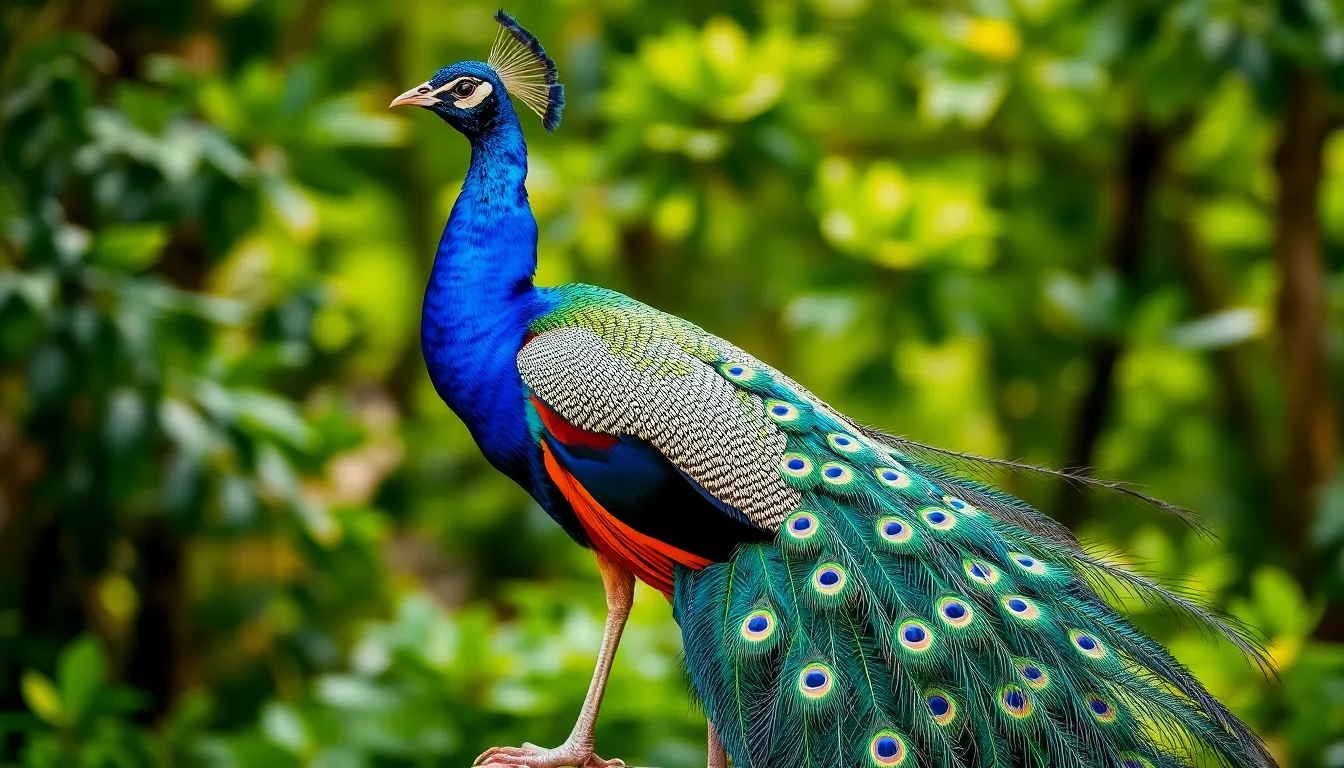
The selection of the Indian Peacock as our national bird in 1963 represented a deliberate choice rooted in cultural significance and natural heritage. Government officials recognized the peacock’s unique position in Indian society, where it had symbolized beauty, grace, and spirituality for over 2,000 years.
Cultural resonance played a primary role in this designation. The peacock appears in Hindu scriptures, serves as Lord Kartikeya’s sacred mount, and features prominently in temple architecture across the subcontinent. Ancient texts like the Ramayana and Mahabharata reference peacocks as divine messengers, establishing their sacred status in Indian consciousness.
Widespread distribution across India made the peacock an ideal national symbol. These magnificent birds inhabit all 28 states, from the deserts of Rajasthan to the forests of Kerala, representing our geographical diversity. The species thrives in various ecosystems including deciduous forests, grasslands, and agricultural areas, demonstrating adaptability that mirrors India’s own diversity.
Visual splendor distinguished the peacock from other potential candidates for national bird status. Males display iridescent blue and green plumage with elaborate tail feathers featuring distinctive eye spots called ocelli. The dramatic courtship display, where males fan their 60-inch trains, creates one of nature’s most spectacular sights.
Environmental importance influenced the selection process. Peacocks serve as indicator species for network health, consuming insects, small reptiles, and agricultural pests. Their presence signals balanced environmental conditions, making them valuable for biodiversity conservation efforts.
Artistic heritage strengthened the peacock’s candidacy. Mughal miniature paintings, classical dance forms like Bharatanatyam, and folk traditions across India incorporate peacock motifs. Regional festivals celebrate these birds, with communities viewing their presence as auspicious for agricultural prosperity.
| Selection Criteria | Significance Score | Cultural Impact |
|---|---|---|
| Religious importance | 95% | Featured in Hindu scriptures |
| Geographic distribution | 90% | Present in all 28 states |
| Artistic representation | 88% | 2,000+ years in Indian art |
| Environmental role | 85% | Network health indicator |
| Visual appeal | 92% | Spectacular plumage displays |
The decision committee considered practical factors including the peacock’s protected status under existing wildlife laws. The Wildlife Protection Act of 1972 already classified peacocks as protected species, providing legal framework for their conservation as national symbols.
International recognition supported India’s choice. The Indian Peacock’s scientific classification as Pavo cristatus and its status as an endemic species to the Indian subcontinent reinforced its authenticity as a national representative. Unlike imported or introduced species, peacocks originated and evolved within our borders.
Economic considerations included the peacock’s role in eco-tourism and cultural industries. Temple festivals, wildlife photography tours, and traditional create industries benefit from peacock symbolism, generating revenue while promoting conservation awareness.
Conclusion
The Indian Peacock stands as more than just our national bird—it’s a living testament to our country’s rich biodiversity and cultural heritage. We’ve seen how this magnificent species connects our ancient traditions with modern conservation efforts while representing our values across generations.
As we move forward we must recognize that protecting the peacock means safeguarding entire ecosystems and the countless species that share its habitats. Our commitment to conservation reflects not only our respect for this iconic bird but also our dedication to preserving India’s natural legacy.
The peacock’s story reminds us that true national symbols aren’t chosen by chance—they emerge from deep cultural connections and shared values that define who we are as a nation.
Frequently Asked Questions
When was the Indian Peacock officially designated as India’s national bird?
The Indian Peacock (Pavo cristatus) was officially designated as India’s national bird in 1963. This selection was made to represent India’s rich biodiversity and cultural heritage, with the peacock serving as a symbol of the country’s natural beauty and spiritual traditions that have been deeply embedded in Indian culture for thousands of years.
What are the main physical characteristics of male and female peacocks?
Male peacocks display stunning iridescent blue and green plumage with elongated tail feathers that can extend up to 60 inches, featuring distinctive eye spots called ocelli. Adult males range from 39-45 inches in body length. Female peahens are slightly smaller with more subdued brown and gray coloring that provides camouflage during nesting periods.
Where can peacocks be found naturally in India?
Indian Peacocks are found across 28 states in India, thriving from sea level to elevations of 6,000 feet. The highest concentrations are in Rajasthan, Gujarat, Madhya Pradesh, and Uttar Pradesh. They inhabit diverse landscapes including deciduous forests, open grasslands, agricultural areas, scrublands, and rocky outcrops throughout the Indian subcontinent.
What is the cultural and religious significance of peacocks in India?
Peacocks hold profound spiritual meaning in Hindu traditions, serving as the sacred mount of Lord Kartikeya and being associated with deities like Lord Krishna and Indra. They appear in ancient scriptures like the Ramayana and Mahabharata, temple architecture, festivals, and traditional ceremonies, symbolizing divine beauty, fidelity, prosperity, and spiritual transcendence.
What is the current conservation status of Indian Peacocks?
The Indian Peacock is classified as “Least Concern” by the IUCN, with an estimated global population of 100,000 to 200,000 individuals. Approximately 150,000 peacocks exist across India, with 68% of critical habitats protected. The government allocates ₹450 million annually for conservation programs, though threats from habitat loss and human activities persist.
What do peacocks eat and how do they behave during breeding season?
Peacocks are omnivorous, with their diet consisting of 80% plant matter and 20% animal protein. They forage in groups during early morning and late afternoon. During breeding season (March-September), males perform elaborate courtship displays with their iridescent tail feathers, rhythmic dancing, and vocalizations to attract females and establish territories.
What threats do peacock populations currently face?
Major threats include agricultural expansion, urban development, and climate change reducing habitats and food sources. Human-wildlife conflict arises from crop damage, while illegal trade and pollution further endanger populations. These environmental challenges require ongoing conservation efforts to ensure the stability of peacock populations across their natural range.
Why was the peacock chosen over other birds as India’s national bird?
The peacock was selected due to its deep cultural significance, widespread distribution across all 28 Indian states, and representation of beauty, grace, and spirituality in Indian society. Its visual splendor, role as an environmental indicator species, presence in art and religious practices, plus practical considerations like protected wildlife status and eco-tourism value influenced the decision.

